Bowhunting Giant Late-Season Bucks
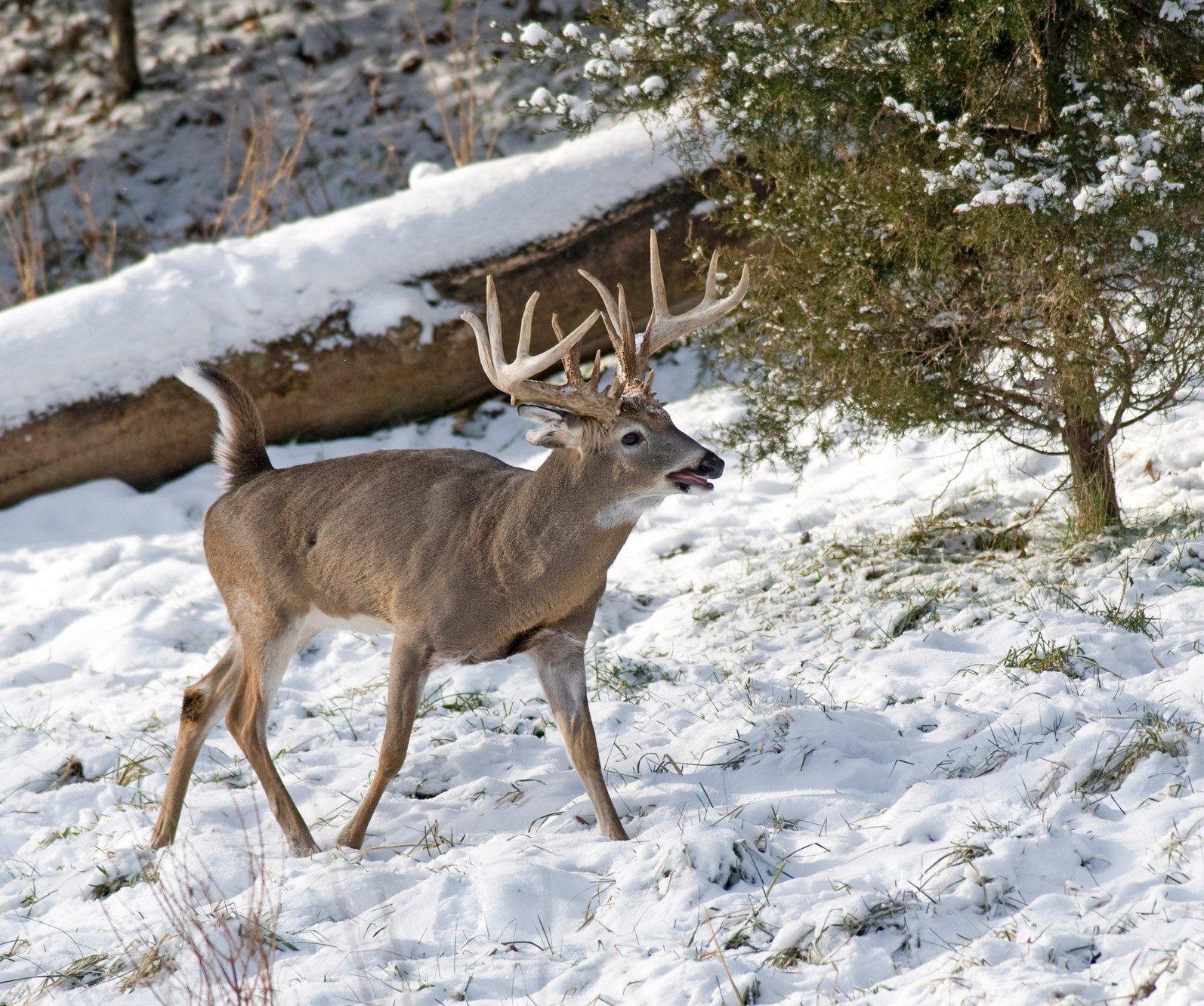
Todd had broken his right hand back in November and had been off work. He couldn't bowhunt and it was killing him, but that didn't stop him from watching deer.
I could see Todd up in the old barn and I went over to see what he was looking at, says B.J. He noticed the eight does and two bucks out in the nearby grain field. One of the bucks was a tremendous 150-class 8-pointer. The other was an even truer giant, a 10-pointer Todd had been watching for a couple of weeks since his injury.
The monster was in a vulnerable spot near a creek bottom, so they formulated a quick plan.
B.J changed into his camo, grabbed his bow and, using cover and dipping out of sight and mind of the deer, sneaked to a log blind he'd built in the creek bottom. Todd circled carefully around the creek, moving silently, and let his scent ride the south wind down into the bottom.
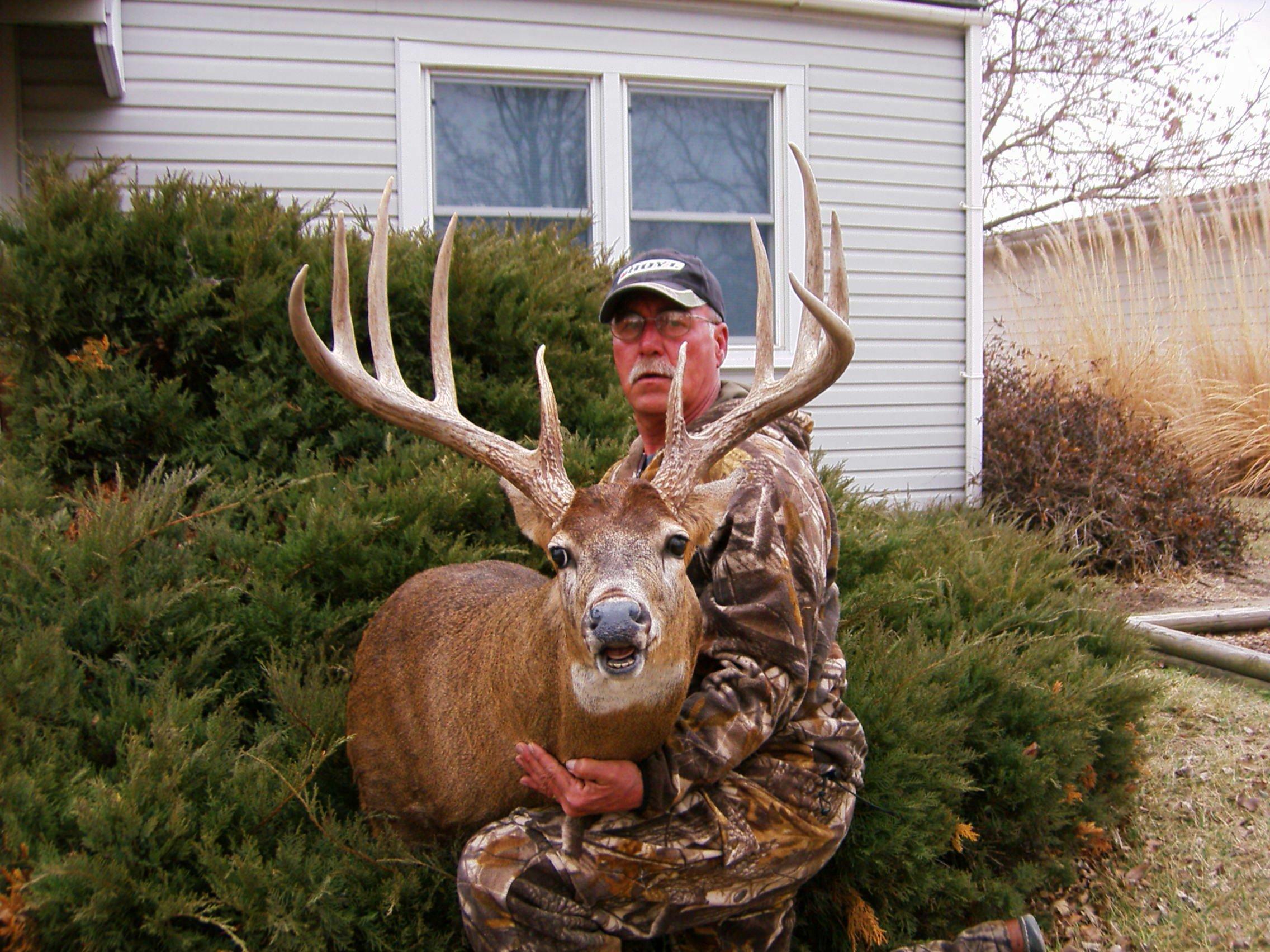
An antler…a buck…the giant 10!
The buck saw the does and moved toward them. B.J. drew his Hoyt bow, and when the brute trotted into a shooting lane at 20 yards he released the arrow.
The does exploded from the creek bottom and the buck dropped to the ground. He got back on his feet, wobbled a bit and dropped out of sight into the creek bed.
I began to shake when I realized what deer it was, says B.J. We had been after this buck for years. He was past his prime, probably 9 ½ years old.
Todd approached Dad from out front and got the thumbs-up. He found blood, followed it down to the creek and was amazed at what he found. Yes, the old 5x5 they'd had so much history with for several seasons!
For all you hard-core bowhunters, I don't have to tell you what an accomplishment it is to kill a 9-year-old whitetail buck…with a 180-inch typical rack…in December, weeks after the main rut and smack in the middle of rifle season…from the ground, the only way B.J. Clement hunts anymore.
But get this: This was the second giant Todd had helped his dad kill in as many years. One December afternoon in 2009, B.J. arrowed a beautiful 6x6 with dagger brows that netted 181 7/8 -- one of the top archery typicals shot anywhere in the country two years ago. Indeed, this father-son duo has figured out a system for bowhunting giant late-season bucks.
We love to bowhunt in December, even though that is when Kansas' general firearms season comes in, says Todd, who has shot some great bucks as well. You should see the incredible racks (mostly typical in their part of the state) these guys have on the wall. In our part of Kansas, the second rut can be as good as or better than the main rut, especially when the weather is cold.
Team Clement's December success revolves around four tactics.
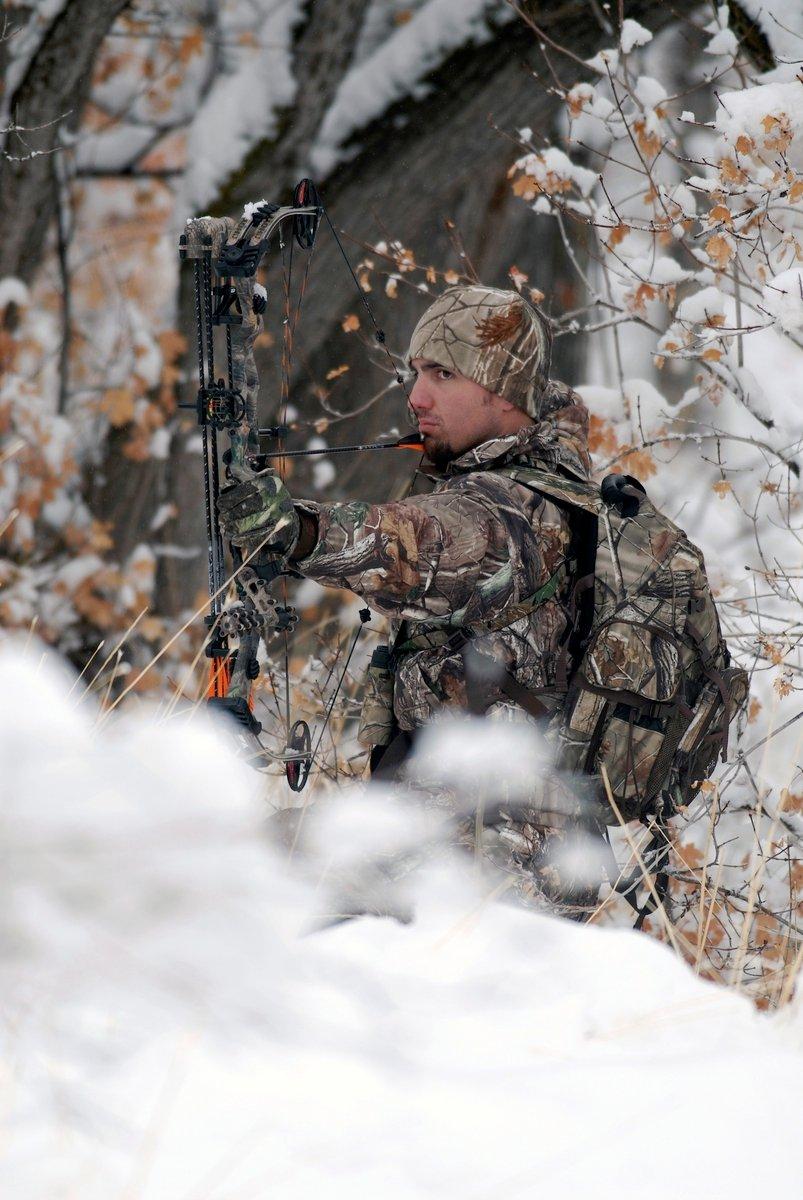
Most bowhunters glass fields in late summer and early fall, and keep it up throughout the mid-November rut. But how many of us really spot and scout hard-core for deer into December?
Heck, that's when the Clements get serious.
I am always watching and glassing, checking the fields and edges where we hunt every chance I get, says Todd, who notes this is vitally important late in the season. Crops are cut at various times depending on the weather, and rifle pressure heats up. By the first week of December, bucks aren't nearly as easy to pattern as they were earlier in the fall.
Take the 2009 rut for example, says Todd. The corn and milo were not cut in mid-November because it was so wet, and the bucks were spending a lot of time out in the middle of the fields, hiding out in the tall crops. The hunting was tough.
But by the first week of December the crops were cut and the bucks became more visible as they transitioned into new core feeding and bedding areas. One evening after work, Todd glassed the clipped milo and spotted the monster typical that B.J. shot days later.
The buck was running the edges, looking for does, Todd says. Like I said, the second rut is sometimes better than the first in our area.
Todd slipped in and scouted the woods where the buck was rutting and found huge, fresh rubs and scrapes. He implemented a scent strategy that ended up helping Pops get it done (more on that later).
The Clements also keep trail cameras running throughout December and even later. Sometimes they get images of a buck they can move in and hunt that season; other times it helps them in the long run.
Back in January 2005 they got a single image of a striking but young tall-tined 10-pointer. That one picture is all we got, but it kept us thinking and hoping for years that the 'ghost' was still around, says B.J.
Well, he was. It was the 181 7/8-inch typical that B.J. killed in 2009.
PRESSURE SAVVY
Todd and B.J are fortunate to hunt a secluded old farmstead in great Kansas buck country, and they hunt that ground smartly. They archery hunt exclusively, and that inherently minimizes pressure. They don't over-hunt it. If the deer movement is not so great in the primary November rut—perhaps the weather is warm and/or the crops are not harvested, and the bucks are not visible—they back off, keep looking and scouting and wait until the conditions are better during the second rut.
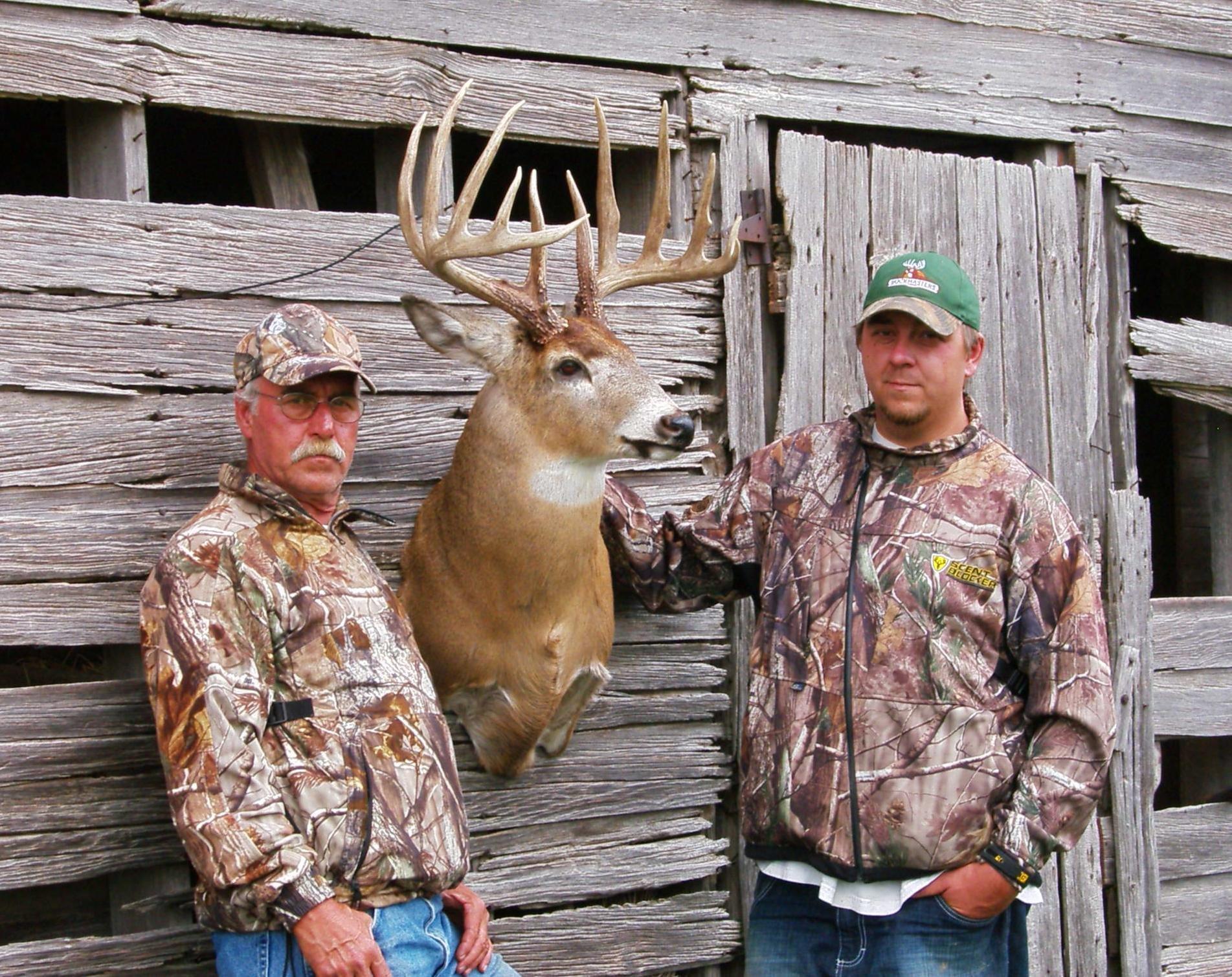
When the general rifle season opens on surrounding lands in early December, the Clements' bow ground becomes a de facto sanctuary for does and bucks fleeing the pressure. That's why we keep looking and checking; you never know when a big buck we've never seen before will get pushed into our area, Todd notes.
If they spot a new shooter, they move in and try to get him fast, before he changes his pattern and leaves. But still, they hunt low-impact going in and out. Even on days when one of them shoots a deer, they take their time and track slowly, silently and easily.
We do everything we can not to push deer off our area; that's especially critical late in the season, Todd says.
STAY GROUNDED
B.J Clement bowhunts almost exclusively from the ground these days. He builds small brush and log blinds in strategic funnels and near edges where deer typically move year after year. Often he sets up in an old barnyard, amid the crumbling buildings and thickets, which offer excellent cover.
I just feel more comfortable on the ground, he says. But there are also strategic reasons he does it in December. In the open winter woods, hunkering in brush or behind a building can offer more cover than hanging off the side of a barren tree. Also, depending on your setup and the movements of the deer in an area, it's often easier to predict the wind and use it to your advantage when you're ground hunting.
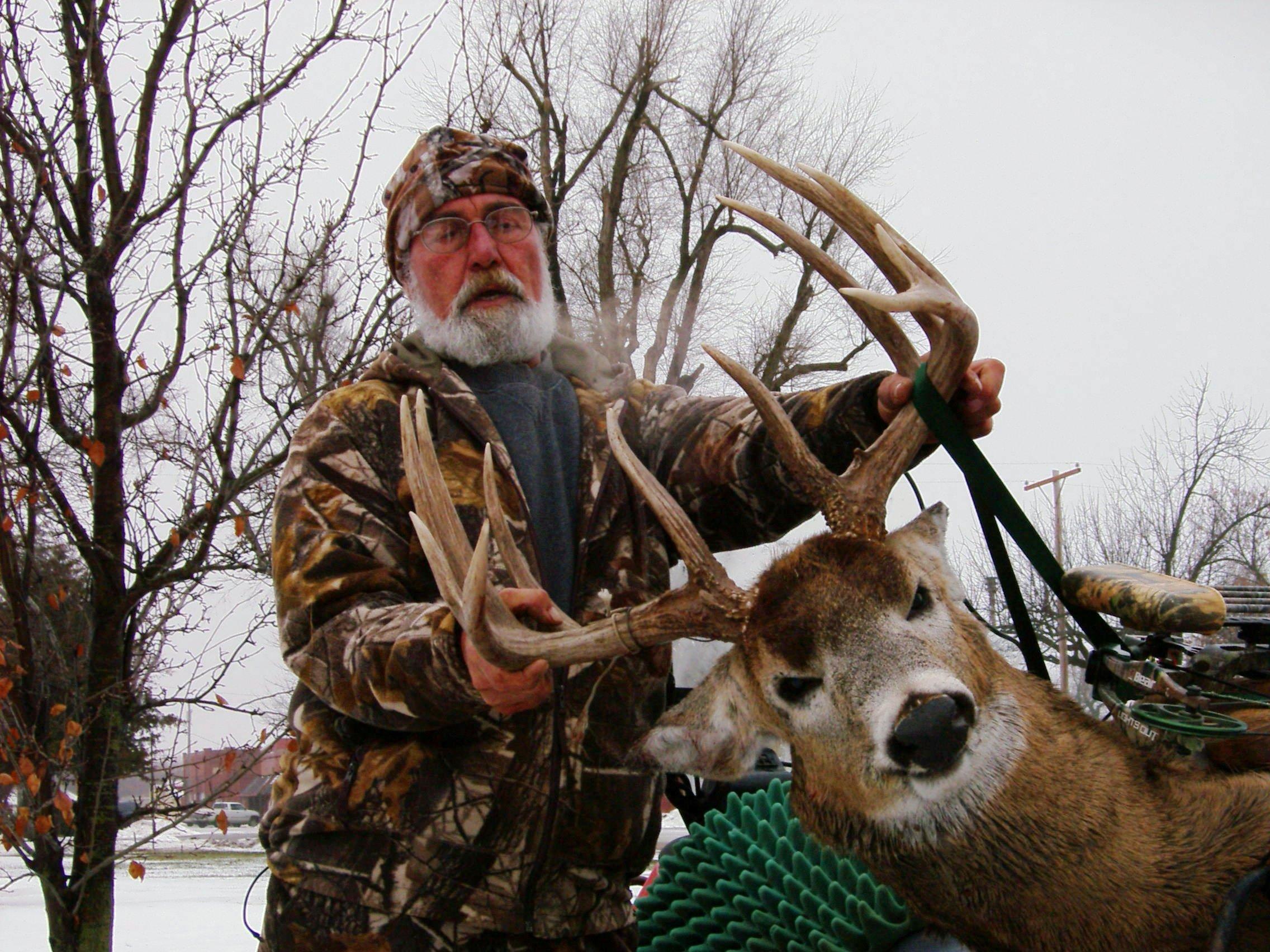
On opening weekend of the 2009 gun season, B.J. hid in an old barnyard close to a milo field where he and Todd knew some good bucks hung out. Rifles cracked on nearby lands, and deer moved. He saw plenty of young bucks and does, but no shooters.
To help Dad out, Todd, who had killed his buck earlier in the season, pulled out all the stops and set into motion one of his favorite tactics. On Monday and Tuesday while Dad was working, I snuck into the farm yard and dug several big mock scrapes, and made scent trails all through the area with both doe estrus and dominant buck urine, he says. I used the urine from the buck I'd shot weeks before.
A snowstorm rolled in later in the week, and the temperature dropped into the teens. Todd went back and refreshed the scrapes and scent trails to mock a hot doe hanging in a late-rut breeding area. When my dad went in on Saturday afternoon he saw that a buck had torn the barnyard to pieces, Todd says. Fresh, huge rubs and scrapes were everywhere.
B.J. hunkered in his blind and waited. The afternoon was slow, until around 5 p.m. A huge buck started into the woods toward B.J., but the deer spotted a doe and took off after her.
Minutes later, B.J saw the giant again. He stopped and rubbed a large hedge tree, then started walking into the barnyard. The buck worked closer and closer, and then stepped behind a dilapidated building. B.J. drew, and when the buck stepped out at 30 yards, he released his arrow.
It all came together that December day. The milo had been cut, the temperature had dropped, snow was on the ground and the second rut was smoking. The spectacular 12-point typical buck had walked one of Todd's scent trails to within 30 yards of where B.J. was hiding. Pops made a good shot and another Kansas monster hit the ground.
Friends, I don't care who you are or where you live, late-season archery hunting doesn't get any better than that.
SIDEBAR:
COLD WEATHER BOW GEAR
- Wear an extended arm sock that runs from your wrist to your bicep so a thick coat sleeve won't grab the bowstring.
- Layer to bowhunt. A base of UnderArmour Cold Gear, topped with a heavy fleece top and pants lined with Windstopper (best stuff to break the cold wind) works well.
- Wear a glove on your bow hand, but leave your shooting/release hand bare. Stuff your pockets with chemical hand warmers to keep your bare hand warm.
- In a blind, camo boot insulators work great. Some of the old-school insulators were bulky as clown shoes, but today's new styles, like Arctic Shield Boot Insulators, are thinner, lighter and better. Slip them over your boots, toss in some Hot Hands and keep your toes toasty.






